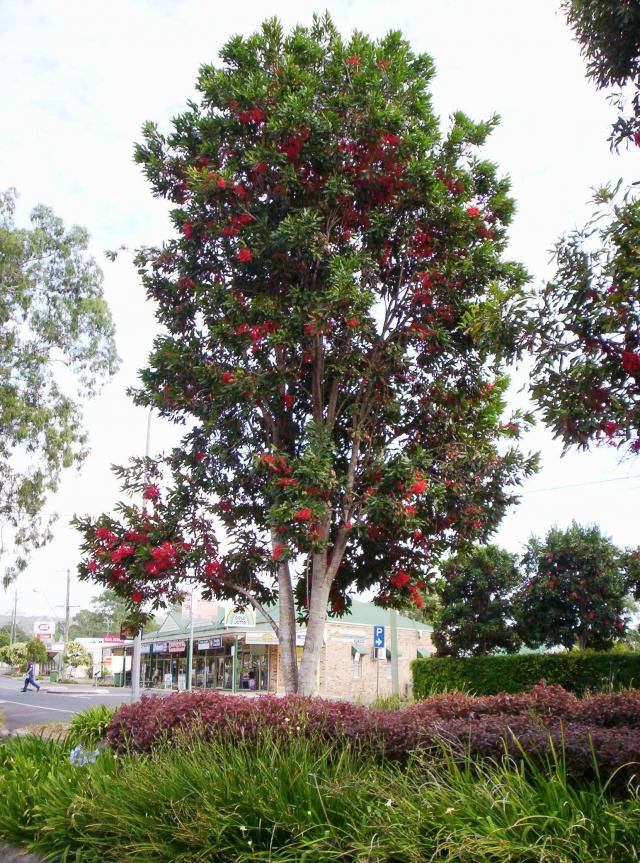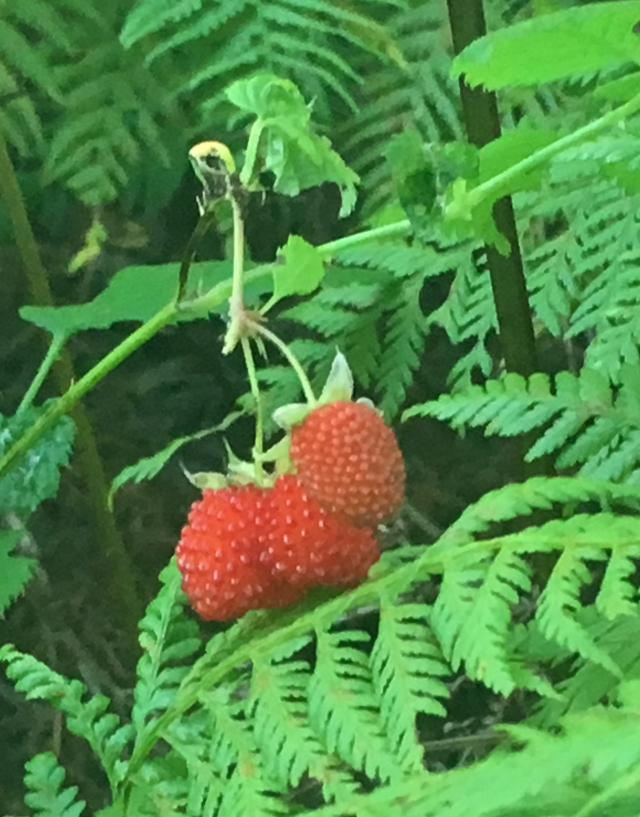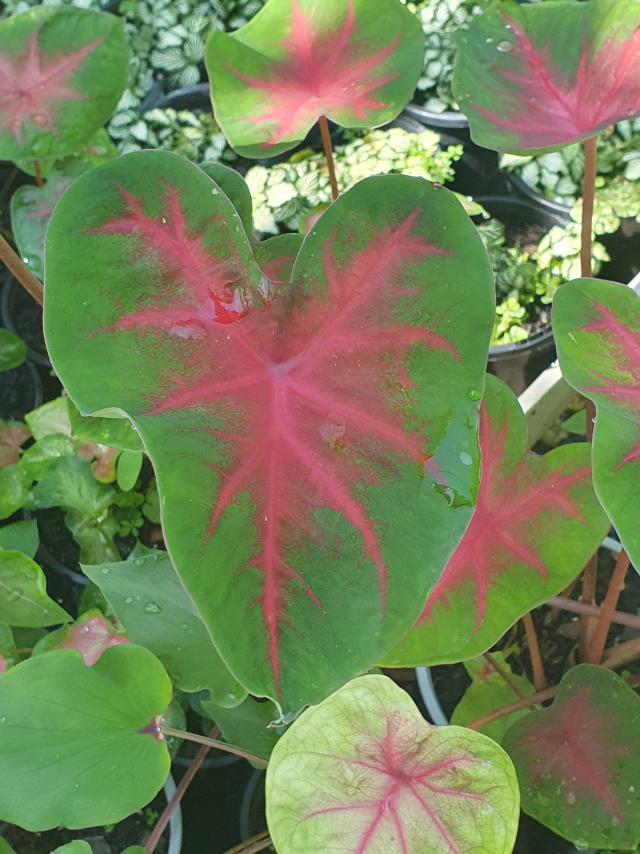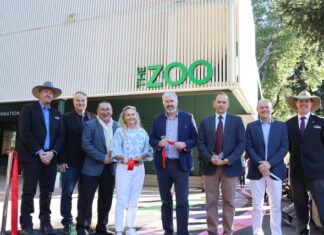I love the lead up to Christmas in the garden as there are so many plants that bring those precious family memories. Those trees and shrubs that were central to family activities at this time of year.
Some of the trees and shrubs that have a special place in my memories include a member of the Grevillea family that creates a lot of interest during the heat of Summer with its unique flower.
A native fruiting plant that is native to Berserker Wilderness Area and a spectacular, deciduous, flowering tree that bears flushes of scarlet, foamy flowers.
The Wheel of Fire or Stenocarpus sinuatus is a rainforest tree that is related to the Grevilleas.
This bushy pyramid shaped tree produces spectacular clusters of bright red and orange, cartwheel flowers with yellow tips during the warmer months of the year.
The flowers are unique in pattern as they look like they have been arranged like the spokes of a wheel. The flowers will grow straight off the wood of the tree. It has large, wavy edged, leathery, dark green, glossy leaves that truly complement the flowers.
Stenocarpus sinuatus is slow growing and will require some sun protection when young but as the tree matures it grows best in full sun.
What makes this tree special to my family is that it was the first plant species my late Father ever grew. He always would have these trees growing in the nursery to give away to new gardeners or community groups.
On the summit of Mount Archer there are two species of Wild Raspberries. There have been many stories over the years of families collecting Native Raspberries during visits to Mount Archer including my family.
Spending an afternoon picking and eating this fruit can be great fun. As we get close to Christmas the last of the last Wild Raspberries for season are produced and I always think they are the sweetest. The fruit has a sharp berry-raspberry flavour that is stronger than exotic raspberries.
There are two species of Wild Raspberry that can be found growing on the Summit of Mount Archer the Rubus parvifolius or Pink-flowered Native Raspberry and Rubrus probus and Native Raspberry.
Rubus parvifolius or the Pink-flowered Native Raspberry is a prickly scrambling shrub or trailer growing up to 1m with bright green wrinkled leaves. Dark pink flowers will appear from October to December flowered by edible red berries from December to April.
In the garden this shrub can be pruned and shaped and can be grown in semi-shade to dappled light from under the canopy of a tree.
Rubrus probus or Native Raspberry is a prickly large rambling or cascading shrub that can grow up to 3m high.
Small white 5-petalled flowers occur from late Winter to Summer and are followed by clusters of juicy bright red fruits 10-30mm in diameter. In the home this large rambling shrub is best kept to manageable proportions.
Last Tuesday we collected and ate a few dozen Wild Raspberries as well as enjoyed the coolest location in Central Queensland.
This time of year is also when Caladiums are at their most colourful and brings back the memories of the Caladium collection of my Grandmothers. All these Caladiums were grown in Terracotta Pots and would be taken from the Bush House and displayed around the veranda for Christmas.
Her collection of Caladiums included some with foliage of dark green with white, pink and red speckles; some with dark red centres with wide green borders then there was one large plant with pink with red veins and pink-speckled green fringes on dark green foliage. And my favourite Caladium with bright green foliage, a creamy white centre with white veins
Caladiums can be grown either as potted plants or as shade plants in the garden. Foliage colours can range in various shades of red, pink, white, and green to yellow-greens. There are two basic types of caladium cultivars: fancy- and strap-leaved. Fancy leaved varieties have large, heart-shaped or semi-heart-shaped leaves.
The strap varieties have smaller, narrower, elongated leaves giving the plants a more compact habit. Strap leaved caladiums produce more leaves per tuber than fancy-leaved caladiums. Fancy leaved varieties range in height from 30 to 50cm while most strap leaved varieties are less than 30cm in height.
Caladiums grow best in the partial shade of open, high-branched trees. They will need protection from full sun and also they are not tolerant to both frost and drought conditions. Some of the newer hybrids will tolerate exposure to full sun for a couple of hours a day. Most pink leaved caladiums can develop a brownish, scorched appearance when grown in sun. They will perform quite well in full shade but the colour may not be as good.
Do you have certain plants that at Christmas bring back precious memories with your family?
CHRISTMAS WISH
On behalf of my family and myself I would like to wish everyone a happy and hopefully a cool Christmas and I hope 2023 is going to be a great year for all of Central Queensland.











